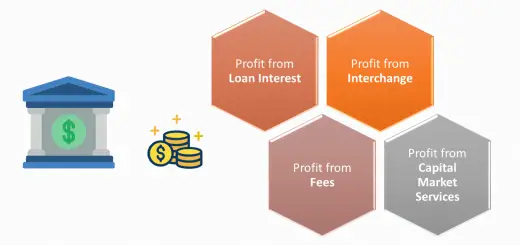Advantages & Disadvantages of Initial Public Offering (IPO)
Understanding Initial Public Offering (IPO)
An IPO is the first-time share offering process of a private company to public investors. The initial share offering transaction is traded via the share market.
The initial public offering (IPO) has many benefits as well as many risks. IPOs are not suitable for every company. Hence the company management should carefully consider this. In this article, we have explained the pros and cons of IPO with a detailed explanation below.
Advantages (Pros / Positives / Benefits) of Initial Public Offering (IPO)
1. Improvement of Credibility, Goodwill, and Publicity
An IPO is the entry point for a company to become a listed company in the stock market. There is a perception in the market that the company achieved a considerable level of growth if it is listed.
Stock market analysts and reporters around the globe will share news about every IPOs. The potential investors will get the news of the IPOs and analyst predictions about whether to invest. This will eventually bring more attention to the company.
The company will attract more recognition when the company goes through the IPO process. The company will get an opportunity to liaise with potential customers and new strategic partners through news and media coverage.
An IPO will help the company to expose its goodwill to the market and its customers, and also improve its visibility. It’s quite similar to climbing up the ladder of growth and getting into an elite list of “listed companies”, to which every company will not be entitled to get in.
2. Opportunity to Get Debt with Lower Interest Rates
Banks and financial institutes view the listed companies as less risky compared to companies which not listed. Listed companies should respect the policies, procedures, and governance structure of the stock market. Hence, the chance of bankruptcy of a listed company is very less than a non-listed company.
Hence the listed companies can receive debts with comparatively lower interest rates because of this risk factor. The overall cost of capital (COC) of the company will get reduced.
3. Easy to Raise Funds
IPO is an opportunity for the company to raise funds by selling equity to interested investors via the stock market. These funds can be utilized in many ways including R&D, hiring new talent, acquisitions, mergers, closing existing debt, building a new product lineup, improving the distribution chain, etc.
As an example, the initial public offering of Saudi Aramco, a Saudi Arabian multinational petroleum and natural gas company, was the largest public offering globally as of June 2022. The IPO of Saudi Aramco raised approximately 25.6 billion U.S. dollars. (Reference: statista.com)
4. Exit Strategy for the Existing Private Investors
The investors of a private company have contributed in numerous ways to grow the company. These investors have invested their cash, time, and resources in the company. At a time they may think that to exit from the investment.
An investment in a private company is only valuable when there is a favorable exit possibility occurs. The IPO is a good gateway for this. The investors of the private company can sell their shares to the public and exit from their investment with a good return on investment.
5. Higher Company Valuation
Shares traded in the public stock exchanges like London Stock Exchange (LSE) and New York Stock Exchange (NYSE) have more liquidity when compared to private shares. The company valuations will become high after a successful IPO. Market capitalization and the stock price will become higher.
Gaining Higher Share Valuation
6. More Transparency for Shareholders
Public companies have certain regulations implied by the securities and exchanges commission (SEC) to disclose information periodically (yearly/monthly/quarterly). Also, a listed company should be governed by Corporate Governance. These companies should also set up director board committees like Risk Committees, Audit Committees, Nomination Committees, and Remuneration Committee.
7. Attract Top Talent
People tend to work in a listed company mainly due to reputation and job security. After an IPO the company can easily attract top talent to its employee base, which will become a long-term benefit for the company. Also, management can decide the eligibility for their employees in new stock options/discounted stock purchase plans, which further attracts the talents.
Disadvantages (Cons / Negatives / Drawbacks) of Initial Public Offering (IPO)
1. Potential Loss Of Control
There is a risk that company founders could lose control of their company after an IPO. In a listed company, an investor will get the company control if he/she buys more than 50% of the company shares. Whoever the shareholders have the majority of the percentage of the shares will get more voting rights.
Even though the initial investors got more than 50% of the total shares after the IPO, they have to consider the other shareholders as well and keep them happy since the company had received considerable amounts of money from other public shareholders.
The shareholders have bought the shares in the IPO with the expectation that the company will act in their best interest without creating a monopoly in the decision-making. If shareholders think that the company is going in the wrong direction, they will force the company through their voting power or public criticism to appoint a new board of directors.
2. Stock Price Variations
After an IPO the company shares will be traded daily in the sock market. This means investors can sell their shares anytime and potential investors can buy the shares as well. Share price depends on the demand for the share in the stock market.
The investors could be day traders or short-term investors, which can sell their shares in a short period, which could affect the share price negatively. The company management should consider and think about the share price factor as well.
Also if the investors are not confident in the future of the company, they will sell their shares which again reduces the share price. One adverse news which harms the company’s reputation is enough to rot the share price of the company.
3. Tough Regulatory Requirements and Reporting
Public companies require to file their financial statements with the securities and exchanges commission (SEC) every year. These reports should be audited by a reputed auditing firm. Also, there are many regulations implied by the stock exchange/SEC for publicly listed companies.
These regulations and reporting are taking management time and also burning company costs. There are several hundreds of tasks to do to fulfill these regulations.
4. High Level of Pressure Given by the Market
There are different market pressures to be handled by a listed public company. Founding investors will tend to have long-term strategic expectations of the company. The other investors could have short-term expectations to receive more dividends and see higher share prices to sell their shares. Analysts around the world are closely monitoring and predicting the future of the company.
The board of directors will have to handle all these market pressures, balance them and proceed with the company’s growth.
Why would a Company Choose Not To Proceed with an IPO?
An IPO is a time-consuming and costly task to do. There are many regulations that the company needs to fulfill after going public. The founders have a risk of losing control of the company after an IPO. These are the reasons for a company not proceeding with an IPO.
Does the Company Gets Capital After the IPO?
The company will receive all the funds raised in the IPO. But after an IPO, when shares are traded on the stock exchange, the company will not get any of that money. Instead, the transaction will happen between the new investor which buys the stocks and the existing investor who has the stocks through the stock exchange.
Initial Public Offering (IPO) Examples
AT&T Wireless IPO (2000), Airbnb IPO (2020), and Warner Music Group IPO (2020) are some of the reputed IPOs in the globe. We have listed a detailed explanation of these real-world IPO examples in the below article,
Learn More about IPOs
We have published the below articles to get more knowledge about IPOs,
- Why do Current Investors Decide to Offer an IPO?
- What are the Steps / Process of IPO?
- What are the Regulatory Requirements of an IPO?
- How Is Initial Share Price Defined?
Key Summary
An initial public offering has many benefits for the company. But it has disadvantages too. This article highlights the both positives and negatives of an IPO which you can carefully weigh and see whether an IPO is suitable for your company at this stage.
Learn More with LearnBusinessConcepts.com
- Bonus Issue: Explanation, Calculation & Real World Examples
- Advantages and Disadvantages of Bonus Issue


